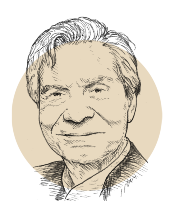When French intellectuals are short of arguments to distinguish themselves from Americans, they compare France’s laïcité (secularism) to America’s “communitarianism.” These two terms are clichés supposed to define our divisions, so long as they are not defined themselves. Theoretically, in this secularized theology that serves as a substitute for knowledge, French secularism is meant to guarantee each individual citizen equality before the law, regardless of religion, skin color, or origins. This banal theory does not stand up well to close examination, since secularism is actually a republican quasi-religion hostile to all revealed faiths, both yesterday’s Catholicism or Judaism and today’s Islam.
Are the French colorblind? That is hardly the lived experience of those whose black or brown skin leads straight to unequal treatment by the police or employers. Faced with this secular citizenship that is supposed to define the happy condition of being French, we like to oppose, with a certain superiority, the American communitarian model. One’s ethnic origin is assumed to confine a person in the United States to a shared fate in cultural, educational, and economic terms. Vilified in France as a threat to our own national model, this communitarianism is just as imaginary as French secularism, and becomes more so every year. This is because a demographic wave is changing America and founding an unprecedented society, one of radical new diversity that has nothing to do with any community.
My thesis is not imaginary but based on facts recently published by the U.S. Census Bureau. As we know, Americans have been counted and recounted every ten years since 1790, as stipulated by the Constitution. Donald Trump tried to avoid this to conceal the fact that America is less and less white – if indeed we know what “white” means. The census requires every American to check a box denoting his or her race. But influenced by debates and new understanding, the boxes have evolved.
In the 1940s, Hispanics and Latinos were considered white. Today they have their own category, which reflects not race but origin: “Mexican,” “Mexican-American,” “Chicano,” “Puerto Rican,” “Cuban,” and others (“Salvadoran, Dominican, Colombian, Guatemalan, Spaniard, Ecuadorian, etc.”). The white population has decreased 8.6% since the last census in 2010. Meanwhile, the number of Americans who consider themselves white and of at least one other race has increased by 316%. Demographers conclude that actual whites in America will have become a minority by 2050. This sheds light on the anxiety felt by certain white males and the political exploitation of this anxiety.
In the 19th century, everything was still relatively simple. One was either white, Black, mixed-race, or Native American. With the 2020 census, the United States has become a kaleidoscope. Each person can choose from around fifty affiliations, such as Samoan or Alaskan Native. To spice up the mix, since the 2000 census, it has been possible to check more than one box and add several lines of commentary to this voluntary selection. Consider Vice President Kamala Harris’s situation: She is Black from Jamaica on her father’s side, and Indian from Madras on her mother’s. She is the new face of America, not at all marginal, but in fact representative.
To further enrich the “melting pot” (an expression we owe to playwright Israel Zangwill, first used in 1908, which then only applied to mixing between the English, Irish, Germans, and Jews), 31.1 million whites, 5.8 million Blacks and 4.1 million Asians reported having multiple races. If we follow the curve of racial or ethnic mixing, the “standard American” in 2050 will be white and Asian and Latino – making it difficult for this person to consider themselves part of a specific community. To define the United States as a communitarian confederation will no longer make sense.
Along with this ethnic porousness, there is theological dilution: A third of Americans no longer belong to a religious community – which was long a marker of identity – while continuing to believe in God, but their own personal god. Meanwhile, and by contrast with earlier communities, there is a rise of new elective tribes, LGBTQIA+ for example. Still, Blacks remain an exception: Of all the ethnic groups, they mix with others the least. While it is becoming incoherent to speak of American communitarianism, there remains a distinct Black “problem,” one with deep historical roots. But this history is not that ancient, since segregation remained legal until 1964. And does France not have its own Arab-Muslim “problem,” as well as an emerging Black question, which does not fit into the theory of secularism?
On the whole, it seems to me that the Americans count themselves too much and the French too little. Both counting too much and not counting at all – ethnic statistics are prohibited in France – lead to a failure to understand both ourselves and others, which prevents us from reducing real ethnic and social fractures. Let us be done with the cartoon-level clichés: Americans are no longer Anglo-Saxons, and the French are no longer Gauls. We are a whole world of peoples.
On both sides of the Atlantic, some are terrified by this mixing and take refuge in partisan slogans (laïcité) or opprobrium (communitarianism). But as the philosopher Elie Wiesel said, when noting the dissolution of Jewish communities through mixed marriages (one half of those in both the United States and France, with similar figures among French of North-African origin), when faced with the dictatorship of ideologies, races, and religions, at the end of the day, it is love that wins.
Editorial published in the October issue of France-Amérique. Subscribe to the magazine.












